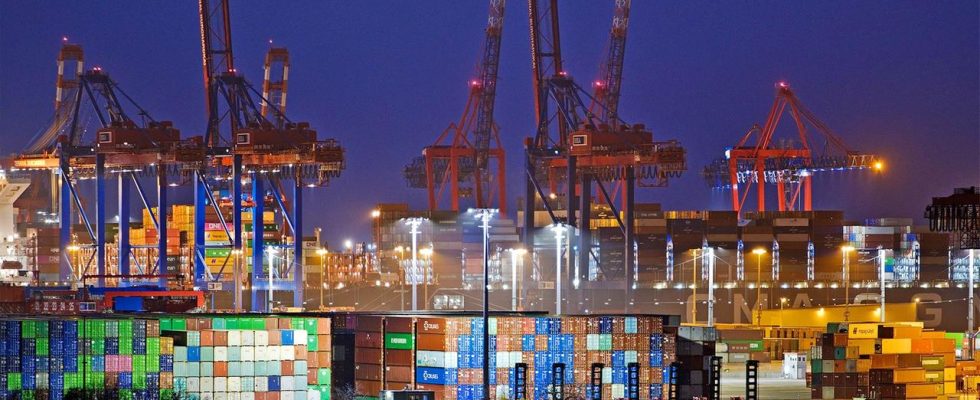The cabinet has launched a national port strategy. Ports can now be classified as critical infrastructure in order to more closely examine the entry of foreign investors.
The Federal Cabinet approved a national port strategy today. The aim is to strengthen German seaports with more than 130 measures. This involves, for example, the international competitiveness of the port location and the important role of ports in the energy transition.
Germany’s ports are extremely important for the business location: the Federal Republic handles around 60 percent of its imports and exports by sea. Last year, according to the Federal Statistical Office, this amounted to around 267.8 million tonnes of goods, including energy, food, clothing, technology and medicine.
By far the largest port in the country is in Hamburg. According to statisticians, 99.6 million tons of goods were handled there last year, as much as all other relevant seaports in Germany combined.
German ports are slow compared to other European countries
However, the importance of the port of Hamburg is decreasing more and more: the largest continental European ports in the North Sea are Rotterdam in the Netherlands and Antwerp-Bruges in Belgium. They are clearly ahead of Hamburg in terms of container throughput: While 7.7 million standard containers (TEU) passed over the quay edges in the Hanseatic city last year – the worst value since 2009 – there were 13.4 million TEU in Rotterdam and around 13.4 million TEU in Antwerp-Bruges 12.5 million TEU.
The fact that container throughput in Hamburg has recently fallen was also due to economic developments. But that’s not all: shipping companies complain primarily about high costs in German ports, about the level of automation in the terminals and the speed of processing. In Hamburg, the aging Köhlbrand Bridge also hinders the accessibility of individual terminals with particularly large container freighters.
Countries would have to invest a lot
Equipping the ports for the future and, above all, preparing them for climate neutrality is extremely expensive – replacing the Hamburg Köhlbrand Bridge alone is currently estimated at around 4.5 to five billion euros. The port industry and the coastal states of Hamburg, Schleswig-Holstein, Lower Saxony, Bremen and Mecklenburg-Western Pomerania have therefore long been calling on the federal government to significantly increase federal funding to finance seaports. The infrastructure alone costs 400 million euros per year due to increased costs. So far, the federal government has only paid 38 million euros per year for all ports combined.
The main reason for this is that the original responsibility for the ports lies with the individual federal states. The states have recently repeatedly criticized the fact that the federal government is not adequately fulfilling its obligations at the ports under the Basic Law for the construction and maintenance of federal transport routes.
No additional money from the federal government
But there shouldn’t be any more money for the ports for the time being, as Federal Transport Minister Volker Wissing made clear in advance. “But what is important to us is: first the plan, then the money. With a common understanding of the port strategy, we can now work on stabilizing the high investments and accelerating planning,” said the FDP politician.
The federal government has spent an average of around 500 million euros per year over the past ten years alone for the fairway adjustments on the Elbe and Weser, the deepening of the Outer Ems, the measures on the Kiel Canal and the expansion of the seaward access routes to Rostock and Wismar invested in maintaining and expanding the connections.
Entry of foreign investors
Nevertheless, the ports are often dependent on foreign investors: in Hamburg, for example, the Chinese state shipping company COSCO has a stake in one of the container terminals. The federal government only approved COSCO’s entry in 2022 after long debates, but limited the share to less than 25 percent.
In Germany, the entry triggered a debate about whether ports should be classified as critical infrastructure and whether investments such as COSCOs should not be fundamentally prohibited. The National Port Strategy also addresses this: According to the draft, ports in this country can in future be classified as critical infrastructure. The entry of foreign investors can then be examined more closely in the future.
Nina Amin, ARD Berlin, tagesschau, March 20, 2024 11:37 a.m

